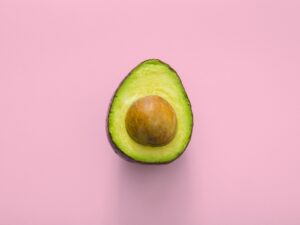What is low carbon food ?
Some simple tweaks to your approach to shopping, cooking, and food waste disposal can potentially cut your food-related carbon footprint by almost two-thirds and it can be a healthy, fun, and inexpensive way to make a very real difference to our precious environment and to promoting ethical products.

What is low carbon food?
Low carbon food is any product that limits its environmental impact when it comes to production and processing, preparation, transportation, packaging and waste. If a product is grown, produced and shopped for locally, it lowers carbon usage in terms of transport fuels. It is also more likely to be seasonal, meaning that it has not taken a toll upon the earth in terms of processing and production.
What is a carbon footprint?
Everyone on earth has a carbon footprint, meaning that we all contribute to carbon emissions simply by existing. The average UK resident uses 12.7 tonnes of Co2e per year. The good news is that low carbon eating can make a real difference to this figure.
Why you should care about your food’s carbon impact?
If caring about what you put in your body is to be considered a prudent lifestyle choice then why not care about the origin of your food, the sustainability of a low carbon food diet and the impact we can all have upon our environment? Products that contain little or no packaging reduce the use of plastics and eating less meat, dairy and processed foods is not only good for your health but also uses less carbon dioxide in production and maintenance. Sensible portion sizes, recycling, and composting can end the process positively by reducing waste.
What is a low carbon diet?
A low carbon diet is a dietary regime that takes into account the impact the food we choose has upon our health whilst considering the effect it has upon planet earth. Choosing to eat less meat, dairy and fewer processed foods is replaced by a diet of fresh, local and seasonal foods which are sustainably sourced and produced and which are disposed of responsibly.
What is the best low carbon food?
Freshly grown, local fruits and vegetables are some of the best low carbon foods available but it is not only Vegans who can reduce Co2 emissions and harmful Green House Gasses (GHGe).
– Locally reared meats such as chickens, their eggs and pork all have lower emissions than lamb or beef.
– Wild game such as pheasant or rabbit would be lower still. Growing in your own vegetables or foraging for free 0% emission foods can be fun and consider finding local producers of cheeses, bread, milk, preserves and even alcohol.
– Local fisheries and fishermen can also supply sustainably sourced, fresh fish with very low emissions and minimal packaging.
What is the cost of adapting a low carbon diet?
Buying locally produced foods can be expensive but clever shopping and savvy household management can reap rewards and keep your bills low.
– Consider where your food comes from and how it was produced and packaged because this will add money to your bill and your emissions. An internationally produced food will have literally thousands of air miles attached to it.
– Cook at the section where foods approaching their sell-by dates are kept in supermarkets. This prevents waste and saves you money.
– Proper storage at home, as well as creative cooking, can help foods to last longer and be used up.
– Always think about what you can grow yourself. This is not only cheaper but fun and good for your mental well-being.
– Having a target to reduce your emissions in every part of your life will ultimately save you money.
Should we ban ready meals and only cook with local ingredients at home?
Banning all processed foods is not practical but it stands to reason that learning to cook from scratch with healthy ingredients should be a target for everyone. Revolutions often start as small gestures so a few small changes can make a really big difference in the long run.
Low carbon facts and stats: How can food waste add to carbon emissions?
In the UK we waste an estimated 9.5 million tonnes of food a year which means we are not only wasting food and increasing emissions, we are also wasting approximately £250-£400 per household. Food waste can be as simple as putting too much food on your plate or can be not using up products with shorter shelf lives. Furthermore, not recycling and composting can have a real impact. 1kg of wasted food can contribute a whopping 7.6kg of carbon emissions to the atmosphere and this can easily be avoided by:
-
– Making a shopping list and only buy what you need. Do not be swayed by 3 for 2 offers or discounts.
– Observe portion control and don’t cook more than you need. If you do, consider leftovers as a meal or freeze for later. Be creative.
– Use your Granny’s domestic advice and be in control of your cupboards and fridge. Poor household management makes waste! Store foods correctly to avoid spoilage.
– Understand that a ‘sell by date’ is not the same as a ‘use by date’.
– Compost peelings and responsibly recycle packaging.
A list of basic foods and their carbon footprints from worst to best
-
Beef (eating) 60
Lamb 24
Chocolate 21
Cheese 21
Coffee 17
Palm oil 8
Pork 7
Chicken/ poultry (farmed) 6
Farmed tinned fish 5
Eggs 4.5
Rice 4
Milk 3
Sugars 3
Soy Milk 0.9
Vegetables 0.4
Fruits (citrus) 0.3
Nuts 0.3
Read next
Food waste in 2021
Which foods go rotten the quickest?
What is anaerobic digestion?
Have your waste collected
Get a fast FREE quote for your waste collection 0800 211 83 90
- Free quote within 1 hr
- Any type of waste
- FREE bins and delivery
- We cover all of the UK